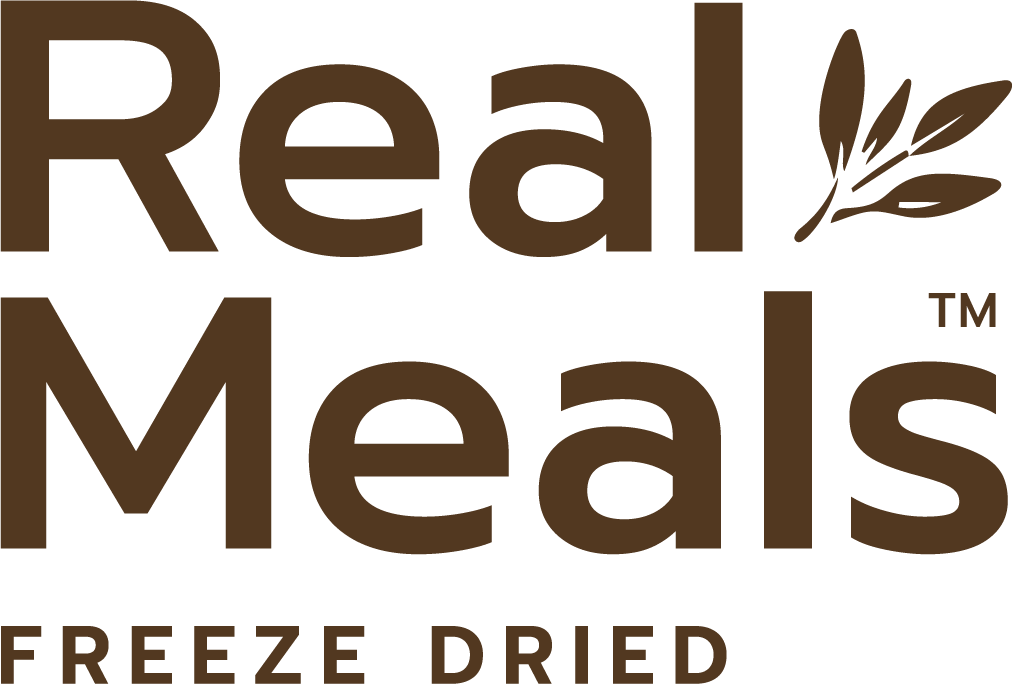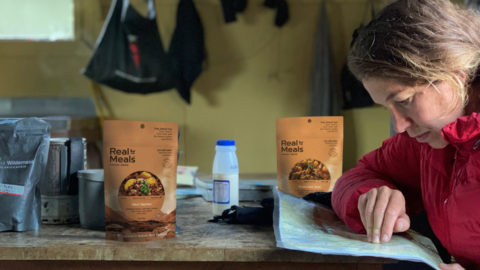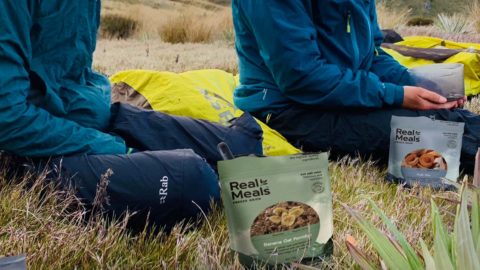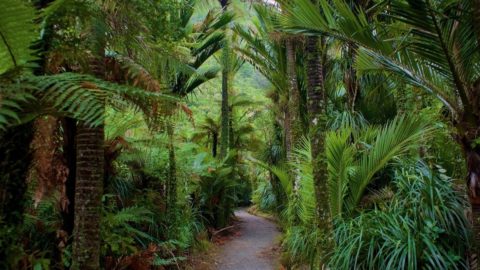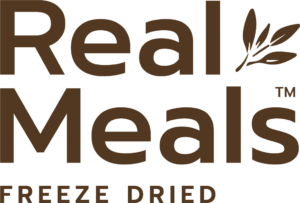Real Meals founder Nathan Fa’avae reports on his experience at the 2024 Yukon 1000 paddle race.

In July 2024, Sophie Hart and I traveled to Whitehorse, Canada, for the Yukon 1000 paddle race, claimed to be the longest and toughest paddle race in the world. So, how did the Yukon 1000 journey start, or where did it start? It started well over a decade ago when I discovered the Yukon River Quest. I was quite keen to do it with my wife, Jodie, and our three children in a six-person canoe, but we didn’t take it any further because essentially, the race was in the New Zealand ski season, and at the time, all my kids wanted to do during the winter was go skiing. But I did plant a seed for the Yukon, and then some years later, I learned about the Yukon 1000. A few New Zealanders I knew then went on to do the Yukon 1000, and that only ignited my interest in the event.
Sophie and I have been adventure racing together for about 14 years, and we have paddled double kayaks, canoes, and all variations of watercraft in many different countries for endurance paddles. Often, they can be long and tedious and into the night, so we’re well used to endurance kayaking together and trying to keep each other awake and, I guess, mindful and stimulated. The other thing with our kayaking is that collectively, we are a fast kayak, and in all the adventure races we have done, we could keep up and, in most cases, out-paddle all the male teams. In fact, the only boat that would normally be able to paddle faster than us in an adventure race was the kayak of Chris and Stu, our adventure racing teammates, but often we could paddle at their pace. This was a strength of our Adventure Racing team and gave us a big competitive advantage. This gave Sophie and I confidence that we could compete with all the male teams in endurance kayaking. The other thing in adventure racing was that the kayak stages, for the reasons above, were always good for Sophie and me because we could actually have some recovery during a race because we were so proficient at kayaking. We often joked that the ideal adventure race for us would simply be five, six, or seven days of paddling, and within those jokes, for many years, the Yukon 1000 has entered our discussions and conversations. However, we have never seriously been able to look at doing the Yukon 1000 while we were adventure racing because it required training for a single discipline. There were also the realistic limitations of how many international events we could do in one year, plus environmental and financial considerations.
But after the Godzone race in 2023, where I announced my retirement from multi-day adventure racing, our team was all quite happy to take a break and step back from that race or, I should say, from adventure racing. Driving home from the Godzone in 2023, Sophie mooted the idea of the Yukon 1000 for 2024 because we had no plans for racing in 2024. At first, I wasn’t sure if I was ready to take on another super challenging multi-day event, but after giving it some thought, I decided that it was something I would want to do. It was also something Sophie and I had spoken about so much, and it felt like it was inevitable that we would do it. It was really just a matter of when. Because there are so many applications each year and the applications open in August the year before the event, we figured we should at least apply and see if we get a spot. At least if we didn’t get a spot, then we would know it’s not an option, but if we got a spot, then that was probably a sign the race was on.
So we applied along with over 6000 other teams, and we found out in August 2023 that we had been accepted. The next step for us was to contact our sponsor Avaya and see if they were keen to be part of the Yukon 1000. Luckily for us, they were, having been such a loyal and dedicated sponsor of our adventure racing for so many years. This meant the race was on, and it was time to prepare.
One of the appeals of the Yukon 1000 was not only the race and getting to explore the Yukon Territory in Canada and Alaska, but it was also the training through the New Zealand summer and autumn that appealed to us both. We are both passionate paddlers and we both are lucky to live on coastal properties, so ocean paddling is the easiest discipline for us to train for. We also used the New Zealand surfski summer racing series as a build-up to the Yukon as we not only needed endurance and strength and stamina for the Yukon, but we also wanted an element of speed, which would be another tool and perhaps an advantage for us in the race. Training went really well, and we had many highlights winning all the surfski races we targeted over summer, including the national championships.
Preparation for the Yukon was an exciting and interesting task, as while there were many similarities to multi-day adventure racing, there were new things we needed to research and understand. We opted to hire a kayak from Yukon Wide, the kayak provider in Whitehorse, Canada, which saved us a lot of logistics of getting a kayak to and from the event. The kayak we hired was pretty good. The kayak design worked well enough for the Yukon River, but the rudder system on the kayak was poor quality, and this added another level of challenge that could be removed with better equipment.
We then traveled from New Zealand to Canada for the race. We had four days in Whitehorse before the race started, and the kayak hire package included three training days, two of which were on a lake, and one was the opportunity to paddle the first 20 km of the race course. This was really good training and preparation for Sophie and me. We also got to meet most of the other teams. While only 30 teams are accepted for the race, only 25 made it to Whitehorse for the start. There were mostly kayaking teams but also a few canoe teams. What became very apparent quite quickly was that the field was mostly male competitors. Out of all the teams, there was only one other mixed-gender kayaking team. Sophie and I were both pleased and proud to be a mixed-gender team, and we were determined to be competitive in what was a male-dominated field.
The race is self-sufficient, so we needed to load on board the kayak all our equipment and food for the entire duration of the event, which we expected to be somewhere between six and eight days, depending on how well we raced. Arriving in Whitehorse, we soon learned that the river was running low and teams should prepare themselves to be on the river one to two days longer than perhaps expected. They were saying it was one of the lower race flows there had been. However, this didn’t really mean much to us as we had never done the race before, and we weren’t to know what a low river flow really meant. For us, the focus was simply to paddle the thousand miles as quickly and efficiently as we could, and that was our only goal. The few days leading up to the race were relaxing and enabled us to prepare without stress and also get to know some of the other teams well, which was fun. The weather forecast for the race was mostly fine with some rain expected at times but nothing severe. There was an active forest fire below Carmacks that we were expected to paddle through, and the general feeling was that we could expect mostly tailwinds in Canada but more likely headwinds once we reached Alaska.

The day before the race start, we had a briefing and gear check, and that’s when everything started to get very real. Race day came, it was warm and sunny on the Yukon riverbank in Whitehorse, and we prepared our boat for the journey ahead. On “go,” there was a short run to the kayaks. We got into the kayaks, and off we went. Sophie and I planned to paddle at a conservative pace and warm into the race. We knew it was going to be a very long paddle and that pacing ourselves for 1000 miles was critical. By the time we got into our kayak and into midstream, we were sitting in about 10th position, and we slowly moved up the field by paddling at a comfortable speed and staying in the fast water. We were somewhat surprised that by the time we reached Lake Laberge, about 30 km into the race, we had moved to the front of the field, arriving at the lake with a British team, “Winging It.”

We started the lake with the British team and very soon discovered there were some small waves and a following wind building. At the briefing the day before, the race director had said if the lake gets rough, to paddle within 400 m of the shore for safety reasons, but when we got to the lake, there was no safety issue that we could see, so we took a more direct line down the lake. It didn’t take long for the waves to grow and make the paddle really fun, surfing small waves all the way down the lake to the start of the Yukon River. We were surprised when we reached the Yukon River and looked back, and we couldn’t see any other teams. But we also knew, being such a long race, that that didn’t mean anything as different strategies and pacing had days and days to determine which would be best. For us, the plan was simple: to paddle the river as best we could at any given time. The lake was a stunning paddle, and we were excited to finally be participating in the iconic Yukon 1000.
Soon into the river, we picked up speed with the flow, and that was a thrill, reaching speeds of up to 20 km/h. The other highlight was that shortly after entering the Yukon River, we saw moose. As the day wore on, we continued to enjoy paddling the Yukon River, and we were surprised that we were alone and had no other kayaks in sight. We paddled the entire day, and the first night loomed, and this was our first stop, as once the clock reached 10 p.m., all teams were required to stop and camp for the night and could only resume paddling after a 6-hour break. With daylight still in the sky, we quickly pitched the tent, sorted some food, and climbed into bed for some rest. It had been a long, exciting day on the water..
The following day unfolded with a familiar rhythm as we paddled steadily toward the compulsory overnight stop. Along the way, we passed through Five Finger and Rink Rapids, which were little more than ripples. Unfortunately, Sophie faced a few hours of discomfort, likely due to having eaten a variety of foods in a short time. Combined with the sitting position in the kayak and the intense paddling, her digestive system struggled, causing nausea and vomiting over the side of the kayak. It was difficult to watch, but her grit and tenacity shone through as she persevered. After a few hours, she began to feel better, much to our relief.
The next few days unfolded much the same way, and we paddled across the border from Canada into the United States, Alaska. The highlight of the race for us was the outstanding landscape and wildlife, including caribou, moose, bears, beavers and eagles. There were few signs of human habitation, with only small scattered settlements at Circle, Beaver, Fort Yukon and Steven’s Village, and then a few very small native communities. The Yukon is a wild and remote part of the world, and the river is of a scale that we have never experienced in New Zealand. Being in the Arctic Circle and under the ‘midnight sun’ was also a unique experience.
Paddling down the Yukon River was an absolute adventure. Some areas were huge and expansive, particularly as we paddled through the heavily burnt areas of forest and the river flowed in numerous channels, making it hard to tell which was the main channel.
One evening, at a campsite we had chosen, we noticed a lot of moose prints on the ground. We didn’t have the energy to move camp, and we doubted what harm moose could cause, so we decided to stay. During the night, Sophie woke me up, alerted by a lot of activity in the river close to our tent. I grabbed the bear spray and slowly opened the tent door to see what was happening outside, only to discover three moose just meters away, splashing in the water. They soon realised we were in the tent and subsequently ran away. We went back to sleep.

On day four, we crossed into Alaska in the morning and stopped at the village of Eagle to ring U.S. border control and inform them that we had entered the USA. We then continued down the river. By now, we were in our groove, and paddling all day started to feel normal as the kilometres went by. There were many amazing natural wonders along the riverbank, and some of the scenes on the river, especially early in the morning and late in the twilight, were absolutely stunning. However, some sections were tedious and boring, and during these stretches, staying motivated and focused was a challenge. But Sophie and I have experienced this many times before, and we worked hard to stay engaged and move with efficiency. We had great discussions, played mind-games, and greatly appreciated the ability to listen to music with our MP3 player and speaker, which are generally not allowed in an adventure race. We also listened to some podcasts, which were mentally stimulating.
Towards the end of day four, we were hit by a fast-moving storm with driving rain and high winds, reducing our speed from about 14 km/h to half of that at 7 km/h. For that reason, we opted to get off the river almost an hour earlier and get an extra hour of sleep rather than battle on at a slow speed. This decision paid off because the next day, we felt great and paddled strongly through the first stage of the flats. Even though we had a headwind that slowed us down, we were mentally sharp on the navigation and kept our momentum and efficiency despite the wind against us. We paddled approximately 280 km that day, which meant if we could do that again the next day, we could likely finish the race. This was very motivating because finishing in under six days would likely secure the victory. We hadn’t seen another team since the beginning of Lake Laberge, but it was possible another team or teams could have passed us in the flats without our knowledge. All we could do was keep moving forward as best we could, and being able to smell the finish was really motivating.

However, getting on the water the following morning, we soon realised that the strength of the headwind made our goal of finishing that day close to impossible. The only way we could see anything changing was if the wind stopped or changed to a favourable direction. We gave it our best, but towards the end of the day, with a few hours to go, we realised finishing wasn’t going to happen. We started to relax and just finished the day at an easy pace. By now, the toll of being on the Yukon was starting to be felt, and it was harder to stay highly motivated. That night, had we paddled to 11 o’clock, we would have ended up camping 25 km from the finish. Instead, we decided to stop at 10 o’clock, which meant we had 35 km remaining in the morning to finish the race.
Out of the two of us, I was definitely the one who was suffering the most. Sophie was in great shape, and you could hardly tell she had paddled for almost six days, but I was starting to experience discomfort with nerve damage to one hand and shoulder pain from a previous injury. While it didn’t significantly affect my paddling ability on the river, it was making it difficult for me to get good sleep in the last few nights, which likely had a bigger impact. However, we didn’t have far to go, and we were highly confident that when we reached the Dalton Highway Bridge, we would be the first team to do so.
Paddling the last 35 km to the finish was a nice way to end after having had a sleep and a rest. By now, the river was a single channel, so if there was a team close to us, either in front or behind, we would have seen them. As we approached the bridge, we felt that we were about to win the 2024 Yukon 1000. It was great to finish and be welcomed by Jon, the race director, the race staff, and people from the Yukon River Camp. There was also a Kiwi couple from Tasman who coincidentally were traveling around Alaska and heard that a Kiwi team was about to finish the Yukon 1000. They stayed an extra day to welcome us, which was a nice gesture that we appreciated.
One aspect I hadn’t appreciated would be so important was the navigation, we had two GPS units with us but all our navigation was using map and compass, and reading the river on site. That navigation was a really intriguing part of the challenge.
Overall, the Yukon 1000 experience for Sophie and me was extremely rich and rewarding. Not just the event itself but also the preparation, training, and trips we did made the whole campaign hugely memorable and special. We feel so lucky to have had the experience of traveling through the Yukon Territory by kayak through such a remote wilderness area, and having that experience is truly a blessing. We are grateful to the Yukon 1000 staff for providing the opportunity for us to take on such an endeavour, and we are also extremely grateful for our major sponsor, Avaya, for supporting, believing in, and backing us. We also had an amazing family of sponsors who provided the equipment we researched and wanted for the race.

We want to thank MSR for the amazing Guardian water purification filter pump that turned yucky Yukon water into crystal-clear drinking water in seconds. We want to thank Xinix Water Treatment for also making the river water safe to drink quickly. Our sleep systems were Thermarest, including the ultralight sleeping mats, Space Cowboy sleeping bags, and Thermorest pillows. Getting to bed at the end of each day was so rewarding and comforting thanks to Thermarest. Platypus was our drinking system, and they worked really well. We used Rasdex kayaking equipment from New Zealand, which included spray skirts, lifejackets (PFDs), kayaking gloves, and kayaking jackets. This gear was perfect for the Yukon and enabled us to travel light, knowing we had the protection we needed. Most of our food was Real Meals, and we ate 7 to 9 of them each day, providing amazing nutrition and food pleasure. We had two Stanley thermoses, which we loved because they meant we had hot water for our dinner and piping hot coffee during the day. We paddled in Merrell Hydromock footwear, which was perfect for being in the kayak or on the Yukon riverbanks. PackTowel was our method of drying each day, and our propulsion on the river was Meek paddles. We took three Meek paddles that use the latest design and carbon technology: a medium, a small, and an extra small. This enabled us both to gear down our kayak blades midway through the race, which was an arm-saver. We also used BioLite products for our battery power and solar charging to ensure our devices were powered. We took SealLine dry bags to ensure all our gear that needed to stay dry did so, and we used our MSR tent and cooker, which proved perfect for the Yukon. We want to thank Tineli Performance Wear for our paddle t-shirts, which were great, and Rab Equipment for our on-land dry clothing. Looking back on our gear choices, we feel we got it right, and there isn’t anything we would change if we were to do the race again.

The Yukon 1000 was a legitimate, authentic epic adventure challenge. There isn’t an easy way of getting down the river, and any team that has finished the race, in my opinion, has achieved something great and should be very proud. It is a special community of people attracted to doing hard things in the wilderness, and perhaps if there is one regret I have from the race, it’s that we didn’t have time to talk with the other teams about their experiences afterward.
When Sophie and I finished, we spent the day at the Yukon River Camp. After long, hot showers, we relaxed during the day, eating food and getting naps. We watched the second and third-place teams finish later that day, and that night we were transferred to Fairbanks, Alaska. Thankfully, the Portuguese team traveled with us back to Fairbanks and stayed at the same accommodation, so it meant we could spend time with them at breakfast and dinner, reminiscing and enjoying sharing our tales from the Yukon, which made the closure of our trip really special and enjoyable.
We are now back in New Zealand, recovering and grateful for being able to do what we have done. We have emerged from the Yukon as slightly changed people in a positive way, and I believe that anyone who races 1,000 miles down the Yukon River would be changed in some way.
Nathan Fa’avae
